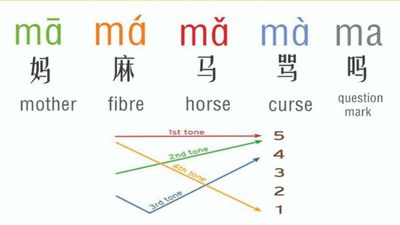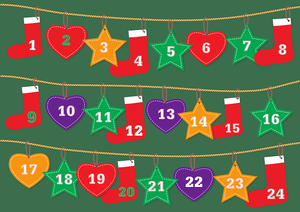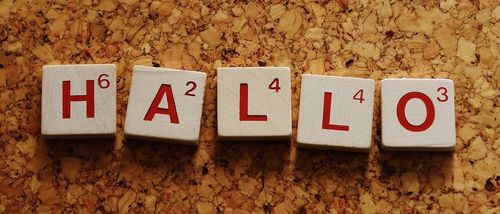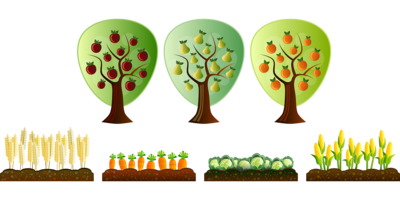Unlocking the Rhythms of Mandarin: A Journey Through Numbers and Counting in Chinese
Explore the essentials of Mandarin Chinese through numbers and counting. Learn to navigate daily life, culture, and language with ease

Unlocking the Rhythms of Mandarin: A Journey Through Numbers and Counting in Chinese
Diving into the world of Mandarin Chinese, you quickly discover that numbers are more than just digits; they're a vibrant thread woven into the fabric of Chinese culture and language. So, let's embark on a fascinating journey through the realm of Chinese numbers, where every numeral holds a story, a tradition, or even a bit of luck.
The Chinese Numbering System: A Symphony of Logic
At first glance, the Chinese numbering system might seem like a new melody you need to learn. But here's the secret: it's surprisingly logical, almost like following a recipe where each ingredient has its place. Once you grasp the basics, everything from 1 to 10, you've got the keys to unlock numbers as grand as the Great Wall itself.
The beauty of it lies in its simplicity and structure. After the initial ten numerals, you start to see patterns that make counting feel like putting together pieces of a puzzle. For example, 11 is literally "ten one" (十一, shí yī), 12 is "ten two" (十二, shí èr), and so on. This pattern repeats, creating a rhythm that's both easy to learn and remember.
Numbers: Weaving Through Culture and Language
But here's where it gets truly intriguing: numbers in Chinese culture are more than just markers of quantity; they're imbued with meanings, emotions, and even destinies. Some numbers, like 8 (八, bā), hum with the promise of prosperity and luck, making them coveted for phone numbers, license plates, and addresses. Then there's 4 (四, sì), which sounds eerily similar to the word for "death" (死, sǐ), and is often avoided in floor numbers, room numbers, or any place it might cast a shadow.
This cultural dance with numbers isn't just superstition; it's a reflection of the profound respect and reverence for harmony, balance, and the forces of luck in daily life. It influences decisions, from the mundane to the monumental, showcasing how deeply numbers are respected and considered in Chinese society.
Embracing the Numbers
As you step into this world, learning the numbers in Mandarin becomes more than just a linguistic exercise; it's an invitation to experience the culture, to understand the stories and beliefs that have shaped it. Whether you're bargaining in a bustling market, celebrating a traditional festival, or simply sharing stories with new friends, your knowledge of numbers will open doors to deeper connections and richer experiences.
So, let's dive in with both curiosity and respect, ready to explore not just the logic of the Chinese numbering system but also the vibrant tapestry of meanings and traditions it represents. Numbers in Mandarin are a journey—one that promises to be as rewarding as it is enlightening. Welcome to the symphony of numbers, where every numeral is a note in the grand composition of Chinese culture and language.
I. Basic Numbers (0-10)
The Ensemble of Basic Numbers
Imagine each number as a character in a story, each with its own personality and role to play:
• 0 (零, líng) is like the quiet pause between chapters, a moment of silence that sets the stage.
• 1 (一, yī) stands tall and proud, a single stroke that begins many journeys.
• 2 (二, èr) adds complexity, a partnership that builds on the simplicity of one.
• 3 (三, sān) stretches out with three strokes, a trio that brings balance.
• 4 (四, sì) might remind you of a chair, stable but to be approached with respect due to its pronunciation close to "death" (死, sǐ).
• 5 (五, wǔ) swings with a sense of completion, the hand you can hold up to show a full count.
• 6 (六, liù) flows smoothly, a number associated with smoothness and luck in Chinese culture.
• 7 (七, qī) cuts across with a decisive stroke, a lucky number for many.
• 8 (八, bā) splits open possibilities, a symbol of prosperity and fortune.
• 9 (九, jiǔ) curves inward, on the brink of completion, often seen as a positive number.
• 10 (十, shí) crosses the threshold, a balanced character that represents perfection and unity.
Tuning Your Ear and Tongue
Pronouncing these numbers is your first concert, where each note matters. Here are some tips to hit the right pitch:
• Pay attention to the tones; they're like the melody that carries each number. For example, "one" (一, yī) is high and steady, while "two" (二, èr) has a rising inflection, like asking a question.
• Watch out for the common pitfall with four (四, sì) and ten (十, shí). Their sounds are distinct, but learners sometimes mix them up because they rush through the pronunciation. Slow down, let each character have its moment.
• Practice makes perfect. Try repeating the numbers in sequence, then mix them up. Like a musician practicing scales, you'll find the rhythm and flow with repetition.
A Few Practical Exercises
• Count everything: From steps as you walk down the street to items on a menu. It’s a simple way to integrate practice into your day.
• Play with prices: When shopping, even window shopping, try to say the prices in Mandarin. It’s a fun way to apply what you're learning in a real-world context.
• Number games: Challenge yourself or a friend to quick number quizzes. "What’s six plus four?" "What’s two times three?" Make it a game, and the learning comes naturally.
II. Counting Beyond Ten
After you've cozied up with the basics, counting from 0 to 10 in Mandarin Chinese, it's time to stretch those linguistic legs and venture a bit further. The path from 11 to 99 might seem like it leads into a thick fog, but trust me, with the logical elegance of Mandarin's numbering system, that fog will soon lift, revealing a road as straightforward as the Great Wall is long.
The Magic of Building Numbers in Mandarin
Think of Mandarin numbers as building blocks, where you start with a simple set (0-10) and then combine them to construct more complex numbers. It’s like playing with LEGOs: once you know how the pieces fit together, you can build anything.
The Simple Logic
From 11 onwards, the logic is like a beautiful math equation that always adds up perfectly. For 11-19, you simply say "ten" (十, shí) followed by the number. So, 11 is "ten one" (十一, shí yī), 12 is "ten two" (十二, shí èr), and so on, up to "ten nine" (十九, shí jiǔ) for 19.
The Twenty Plus
Once you hit 20, it’s like stepping up to the next level of your game. You start with the number for "two" (二, èr), then add "ten" (十, shí), and voilà, you have "two ten" (二十, èr shí), or 20. For numbers beyond 20, you keep this pattern going. For example, 21 is "two ten one" (二十一, èr shí yī), 32 is "three ten two" (三十二, sān shí èr), and so on, right up to 99, "nine ten nine" (九十九, jiǔ shí jiǔ).
Recognizing Patterns and Logic
This system reveals the inherent logic in Mandarin numbers: it's all about position and order. The first number tells you how many tens, and the second tells you how many ones. There’s a harmonious predictability to it, like the rhythm of a song or the steps of a dance.
Practice Exercises
Let's put this into practice with a few simple exercises. You can do these anywhere, anytime, turning the world around you into your classroom:
1. Mental Math: As you go about your day, challenge yourself to convert numbers you see into Mandarin. See a bus number 45? That's "four ten five" (四十五, sì shí wǔ).
2. Shopping List: Write down the quantities of items you need to buy in Mandarin. Need 23 apples? That’s "two ten three" apples (二十三个苹果, èr shí sān gè píngguǒ).
3. Find Your Numbers: When out and about, look for numbers in the wild – on billboards, menus, doors. Try to read them out in Mandarin. It's a fun way to engage with the language actively.
III. Large Numbers
Climbing the Numerical Mountains
In Mandarin, the leap from the base numbers to larger quantities is as graceful as a bamboo swaying in the breeze. The word for "hundred" (百, bǎi), "thousand" (千, qiān), and "ten thousand" (万, wàn) act as your stepping stones.
• Hundreds: To form hundreds, you start with the number of hundreds followed by "百". For example, 300 is "three hundred" (三百, sān bǎi). Simple, right?
• Thousands: The same logic applies to thousands. 5,000 is "five thousand" (五千, wǔ qiān). It’s like stacking layers of clouds, each thousand a new layer.
• Tens of Thousands: Now, here's where it gets interesting. The concept of "ten thousand" (万, wàn) is fundamental in Chinese, marking large numbers in a way that's different from the Western system. 20,000, therefore, is "two ten thousand" (二万, èr wàn).
A Different Perspective on Grouping
The Chinese numbering system groups large numbers by tens of thousands (万) rather than by thousands. So, while in the West we might say "one hundred thousand" for 100,000, in Mandarin, it's "ten ten thousand" (十万, shí wàn). This leap in perspective can be as refreshing as the first sip of tea on a misty morning, offering a new way to see and understand the world through numbers.
Practice Makes Perfect
Let's put these concepts into practice with exercises that bring the numbers to life:
1. Translating Large Numbers: Take a number, say 48,350, and break it down. It's "four ten thousand eight thousand three hundred five ten" (四万八千三百五十, sì wàn bā qiān sān bǎi wǔ shí). Try doing this with other large numbers you encounter.
2. Price Conversion: Imagine you're shopping for a beautiful silk robe, and the price is 9,500 yuan. How would you say that in Mandarin? It's "nine thousand five hundred yuan" (九千五百元, jiǔ qiān wǔ bǎi yuán). Convert other prices you see or think of into Mandarin for practice.
3. Mileage Challenge: If you're planning a trip and the distance is, say, 12,000 km, break it down into Mandarin as "one ten thousand two thousand kilometers" (一万二千公里, yī wàn èr qiān gōnglǐ). Apply this to distances in travel plans or road signs.
IV. Special Numbers and Their Cultural Significance
The Dance of Lucky and Unlucky Numbers
In Chinese culture, some numbers dance with fortune, while others tread cautiously around misfortune:
• 8 (八, bā): The superstar of lucky numbers, eight echoes with the sound of prosperity (发, fā). It's no wonder that phone numbers, license plates, and addresses with eights are highly sought after, and major events are planned on dates with this auspicious digit.
• 6 (六, liù): Symbolizing smoothness and good luck, six is a welcome presence in life’s ventures, from business to personal relationships.
• 4 (四, sì): Here's where the music dims. Four, with its pronunciation close to death (死, sǐ), is often avoided, especially in floor numbers, room numbers, or phone numbers. It's a number that's tread around softly, respectfully.
• 7 (七, qī): While seven can be seen as lucky in the West, its association with separation in Chinese (its pronunciation is close to the word for "to leave" or "to part", 起, qǐ) gives it a bittersweet touch, especially in relationships.
Numbers in Celebrations and Traditions
Numbers in China are not just for counting; they're woven into the fabric of various festivals and traditions, adding depth and meaning to celebrations:
• Spring Festival (Chinese New Year): The whole holiday swirls with numerical symbolism, from the number of dishes served (often even numbers for good luck) to the amounts given in red envelopes, where eights are particularly favored.
• Mid-Autumn Festival: This celebration is marked on the 15th day of the 8th lunar month, embracing the fullness and unity symbolized by the round moon and the number 15.
Superstitions and Everyday Life
Even in daily life, numbers whisper tales of luck, love, and longevity. When giving gifts, items are often given in pairs, as good things, it's believed, come in twos. Conversely, odd numbers are reserved for somber occasions, reflecting the balance between joy and sorrow in the cycle of life.
V. Decimal Numbers
The Realm of Decimal Numbers
In Mandarin, forming decimal numbers is like adding a sprinkle of magic dust to your numerical toolkit. The decimal point is called "点" (diǎn), which literally means "point." So, when you want to say 1.5, you say "one point five" (一点五, yī diǎn wǔ). The simplicity of it is almost poetic, isn't it?
Venturing Into Fractions
Fractions in Mandarin take the scenic route, combining numbers with the word "分之" (fēn zhī), which you can think of as "out of." So, for 1/2, you say "二分之一" (èr fēn zhī yī), literally "out of two, one." It flips the script on the English way of saying fractions, adding a twist to your linguistic adventure.
The World of Percentages
Percentages in Mandarin carry the banner of logic proudly. The word for percent is "百分比" (bǎi fēn bǐ), literally "hundred parts percent." So, to say 50%, you declare "fifty percent" (五十百分比, wǔ shí bǎi fēn bǐ), marking out fifty parts of a hundred. It's straightforward, with a dash of elegance.
Practice Exercises
Now, for the fun part—let's put this knowledge to the test with some practical exercises that might just come in handy whether you're shopping, dining, or discussing statistics:
1. Converting Prices: If you see a sign that says something is on sale for "八折" (80% off), try calculating the discounted price. For a 100 yuan item, that's 20% off, or "八十百分比" off the original price. What's the new price?
2. Splitting the Bill: You're dining with friends, and the bill comes to 300 yuan, but you want to split it three ways. How would you say your share in Mandarin? Hint: It's a dive into fractions.
3. Understanding Measurements: You're cooking a Chinese recipe that calls for 1.25 liters of water. How would you say that measurement in Mandarin? Get ready to mix those decimal numbers into the pot.
VI. Ordinal Numbers
From Cardinal to Ordinal: The Transformation
Transforming cardinal numbers to ordinal numbers in Mandarin is as straightforward as adding a little prefix. Enter "第" (dì), the magical ingredient that turns any number from a simple count into an indicator of order. Stick "第" in front of a cardinal number, and voila, you've got yourself an ordinal number. So, "一" (yī, one) becomes "第一" (dì yī, first), "二" (èr, two) transforms into "第二" (dì èr, second), and the pattern continues seamlessly.
Using Ordinal Numbers in Sentences
Ordinal numbers in Mandarin slip into sentences as smoothly as noodles into a pot of boiling water. They're used to describe sequences, rankings, and more:
• To talk about floors in a building: "We live on the fourth floor" becomes "我们住在第四层" (Wǒmen zhù zài dì sì céng).
• To discuss the order of events: "He finished second in the race" turns into "他在比赛中得了第二" (Tā zài bǐsài zhōng déle dì èr).
Practice Exercises
Ready to play with ordinal numbers and cement your newfound knowledge? Here are some exercises to weave this new thread into the fabric of your Mandarin tapestry:
1. Daily Itinerary: Write out your planned activities for the day in Mandarin, using ordinal numbers to indicate the order. For instance, "First, I will visit the Forbidden City" becomes "第一,我会参观故宫" (Dì yī, wǒ huì cānguān Gùgōng).
2. Ranking Favorites: List your top three favorite Chinese dishes in Mandarin, using ordinal numbers. For example, "My second favorite dish is dumplings" translates to "我第二喜欢的菜是饺子" (Wǒ dì èr xǐhuān de cài shì jiǎozi).
3. Story Sequence: Think of a simple story or a sequence of events from your travels and describe them using ordinal numbers. "The third thing I did was climb the Great Wall" can be expressed as "我做的第三件事是爬长城" (Wǒ zuò de dì sān jiàn shì shì pá Chángchéng).
VII. Using Numbers in Dates and Time
Marking the Calendar: Dates in Mandarin
Dates in Mandarin line up like ducks in a row—year, month, day—each waiting its turn with orderly precision. Here's the simple formula that unlocks this sequence:
• Years are as straightforward as you hope: just say the number. For 2023, it's "二千零二十三年" (èr qiān líng èr shí sān nián).
• Months follow with a logical beat: the word for month ("月", yuè) preceded by the number. March? That's "三月" (sān yuè).
• Days keep to the pattern, with "日" (rì) or "号" (hào) tagging along after the number. The 15th? "十五日" (shí wǔ rì) or "十五号" (shí wǔ hào).
This systematic approach means you can mix and match numbers to create any date, a skill that's as handy as a map in your backpack.
Watching the Clock: Telling Time in Mandarin
Telling time in Mandarin is like following a recipe where each ingredient comes in at just the right moment:
• Hours are marked by the number followed by "点" (diǎn), meaning "o'clock." 8 o'clock? "八点" (bā diǎn).
• Minutes add a sprinkle of "分" (fēn) after the number. 25 minutes? "二十五分" (èr shí wǔ fēn).
• Seconds conclude the mix with "秒" (miǎo). 45 seconds? "四十五秒" (sì shí wǔ miǎo).
Like the steps in a dance, each part of the time has its place, allowing you to spin through your day with confidence.
Practice Makes Perfect
Ready to test your newfound skills? Here are a few exercises to help you master dates and time in Mandarin:
1. Plan a Day: Write out an itinerary for a day, using full dates and times. For example, "I will visit the Shanghai Museum at 10:30 on April 21, 2023" translates to "我将在2023年4月21日上午10点半参观上海博物馆" (Wǒ jiāng zài èr líng èr sān nián sì yuè èr shí yī rì shàngwǔ shí diǎn bàn cānguān Shànghǎi bówùguǎn).
2. Your Birthday: How do you say your birthday in Mandarin? Practice saying it out loud, and maybe even explain it to a friend.
3. The Current Moment: What's the time right now? Look at a clock and translate the time into Mandarin. Repeat this exercise at different times throughout the day to get comfortable with the numbers and the format.
VIII. Numbers in Daily Life
Prices and Bargaining: The Art of the Deal
Bargaining in China isn't just about getting a good deal; it's a dance, a form of communication that's both fun and respectful. Prices in markets or small shops often start high, with the expectation that you'll counter. Here's where your number skills shine. When you hear the price, "五十元" (wǔ shí yuán, 50 yuan), you can counter with "可以便宜一点吗?三十元怎么样?" (Kěyǐ piányí yīdiǎn ma? Sān shí yuán zěnme yàng?, Can it be cheaper? How about 30 yuan?). It's a playful exchange, where numbers are your haggling tools.
Expressing Quantities and Measurements: Cooking and Constructing
Numbers leap off the page and into the pot when you're following a recipe. Quantities like "一千克" (yī qiān kè, 1 kilogram) of flour or "五百毫升" (wǔ bǎi háoshēng, 500 milliliters) of water become part of the culinary adventure. Measurements extend beyond the kitchen, too, into the world of buying fabric or gauging distances, where knowing how to say "三米" (sān mǐ, 3 meters) or "两厘米" (liǎng límǐ, 2 centimeters) can turn your vision into reality.
Phone Numbers, Addresses, and Ages: The Personal Touch
In the age of smartphones, remembering phone numbers may seem quaint, but exchanging contacts is a common part of making connections. Understanding numbers lets you navigate this with ease, whether it's "我的电话号码是..." (Wǒ de diànhuà hàomǎ shì..., My phone number is...) or figuring out a new friend's birthday to celebrate together. Addresses, too, become less daunting when you can comprehend "第一百二十号" (dì yī bǎi èr shí hào, number 120) or "三楼" (sān lóu, third floor), guiding you to doorsteps and dinner parties.
Practice in Daily Life
To weave numbers more seamlessly into your Mandarin tapestry, try these daily exercises:
1. Bargain Hunting: Next time you're at a market, use your Mandarin to bargain. Start with a lower offer and find your way to a happy middle ground.
2. Cook a Chinese Dish: Pick a recipe and translate the quantities into Mandarin. Bonus points if you share the dish and your new vocabulary with friends!
3. Navigate Your Neighborhood: Practice reading addresses and phone numbers you see around you in Mandarin. Try memorizing a friend's address or phone number in Mandarin for an added challenge.









